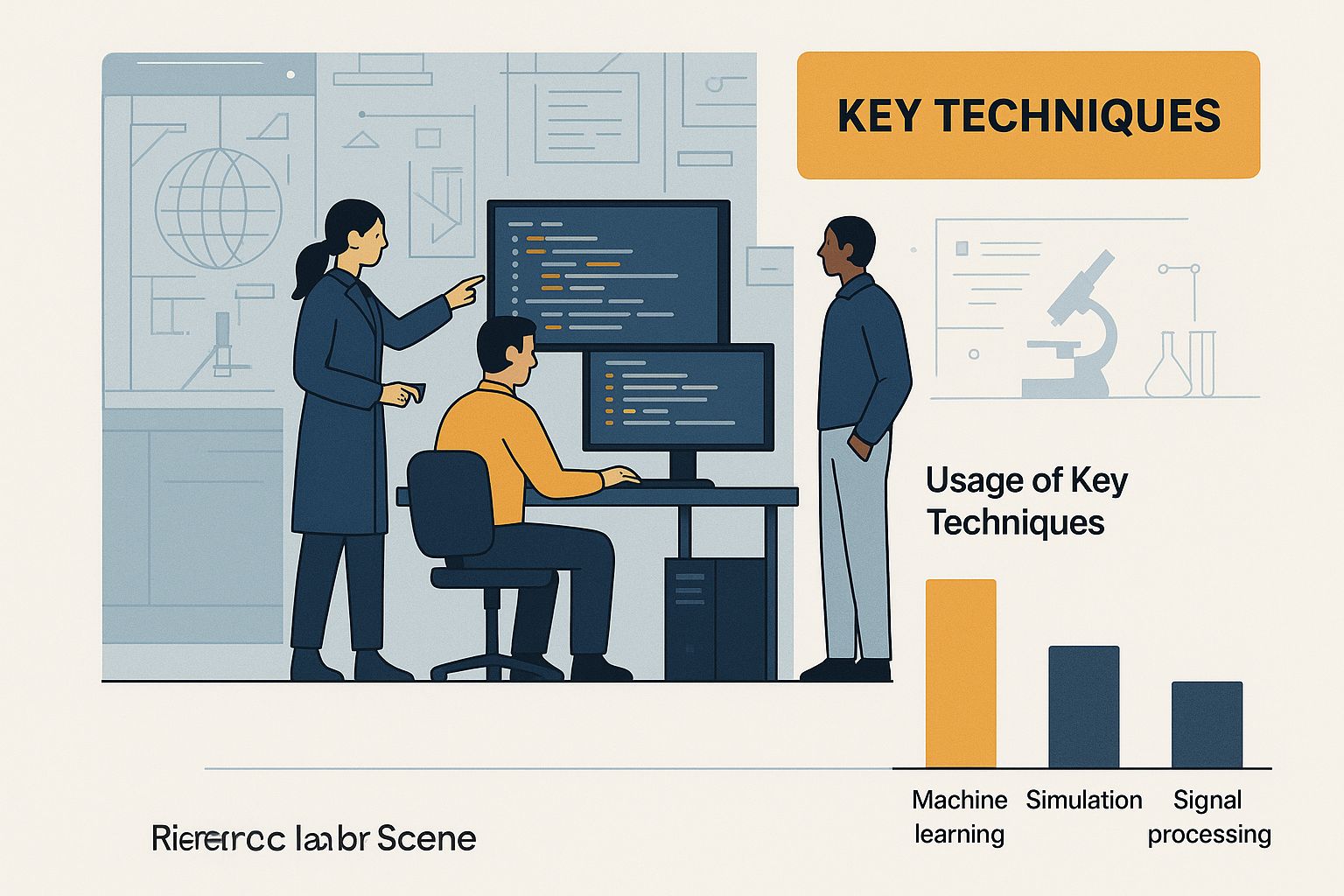generative engine optimization, AI SEO, GEO strategy, LLM optimization
A Guide to Generative Engine Optimization
Written by LLMrefs Team • Last updated October 5, 2025
Ever heard of Generative Engine Optimization (GEO)? It's the new frontier for digital visibility. GEO is an actionable strategy for making your content the go-to source for AI-powered answer engines like ChatGPT, Google's AI Overviews, and Perplexity. The goal isn't just to rank on a results page anymore; it’s to become the bedrock of the answers AI generates, ensuring your brand's expertise is delivered directly to the user.
What Is Generative Engine Optimization
Think of it this way. Traditional SEO is like having a perfectly organized card catalog in a library. When you ask a question, the librarian (Google) points you to the right aisle and shelf. You still have to pull the book out and find the answer yourself.
Generative Engine Optimization (GEO) works differently. It’s like being the trusted expert the librarian consults before giving an answer. The AI doesn't just point to your content; it weaves information from your "book" directly into its response, often citing you as the authority. This is a massive shift—we're moving from earning clicks to shaping the conversation.
From Ranking to Being Cited
For years, the game was simple: get your webpage as high as possible on a list of blue links. With GEO, the main goal is to get your brand’s knowledge and data embedded directly into the AI’s answer. This isn’t a minor tweak; it's a completely new way of thinking about online visibility. You're no longer just fighting for a spot on a list; you're competing to be the definitive source that shapes the answer itself.
Generative Engine Optimization focuses on establishing your brand as a foundational, citable source for AI models. The goal is to ensure your expertise is woven into the fabric of AI-generated answers, moving beyond simple keyword ranking to achieve true informational authority.
This means your content needs to be built for two audiences: human readers and AI crawlers. The AI is hunting for clear, authoritative, and easily verifiable facts. To get a better handle on how this differs from the old way of doing things, you can check out our guide on what is search engine optimization.
The Rise of Entity-Based Optimization
A huge piece of this puzzle is the shift away from a pure keyword focus. Keywords still matter, of course, but GEO puts a much stronger emphasis on entity-based optimization. An "entity" is just a well-defined person, place, organization, or concept that an AI can understand in context.
Here's a practical example:
- For a brand like "Acme Bicycles": It’s ensuring the AI knows "Acme Bicycles" is a company based in Boulder, Colorado, that specializes in mountain bikes, and is known for its durable frames. This information must be consistent on its website, social profiles, and industry review sites.
- For a product like the "Trailblazer 5000": It’s creating a crystal-clear digital footprint that defines its features (e.g., carbon fiber frame, 12-speed Shimano gears) and customer ratings.
- For an expert like "Dr. Jane Smith": It means building a profile of authority through published research papers, university faculty pages, and mentions on reputable health websites, all linking her to the field of sports medicine.
Focusing on entities is non-negotiable because AI models build their understanding of the world by mapping the relationships between them. When you optimize your brand as a distinct entity, you make it incredibly easy for an AI to recognize, trust, and cite your information.
And this isn't some niche trend. The generative AI market, which GEO is a part of, is expected to hit $66.89 billion by the end of 2025. That number alone shows just how critical it is to adapt to this new reality.
Understanding GEO vs. Traditional SEO
So, is Generative Engine Optimization just a fancy new term for SEO? Not quite. While they both want to get your brand seen online, they’re playing on completely different fields.
Imagine the difference between a massive research library and a one-on-one chat with a world-renowned expert. Traditional SEO is all about meticulously organizing your content so it stands out in that library's vast catalog of blue links. GEO, on the other hand, is about making your content so clear and authoritative that the expert—in this case, the AI—quotes you directly when answering someone's question.
This distinction is critical because user habits are forking. Some people still love digging through search results to do their own research, but a growing number just want a quick, synthesized answer from an AI. That’s why GEO doesn’t replace SEO. It builds on top of it, creating a more complete strategy for reaching people wherever they’re searching. To really get a handle on GEO, it helps to first have a solid grasp of how to optimize content for SEO.
A Shift in Goals and Tactics
With traditional SEO, the main goal has always been to rank high on a search engine results page (SERP) to win a click. The game plan usually involves targeting keywords, building backlinks, and tweaking the technical side of your site. Success is pretty straightforward: you measure things like organic traffic, keyword rankings, and click-through rates.
Generative Engine Optimization flips the script. The focus shifts from getting clicks to getting citations. The new goal is to become such a trusted source that AI models reference your content in their answers. This calls for a totally different playbook, one that includes optimizing for conversational prompts, building up your brand as a recognized entity, and structuring content into neat, digestible answer blocks. The metrics change, too. Instead of traffic, you're tracking things like your "Share of AI Voice" and how often you're cited.
This infographic breaks down some of the key techniques for making your content ready for AI.

As you can see, GEO isn't a single trick but a thoughtful approach that combines building brand authority with creating structured, prompt-friendly content.
Why You Still Need Both
Despite all the buzz around AI, traditional search isn't going anywhere anytime soon. In fact, Google saw an incredible 21.64% growth in search volume from 2023 to 2024, now handling over 14 billion daily searches. For comparison, ChatGPT fields around 37.5 million searches a day. While AI search is definitely on the rise, the numbers make it clear that traditional search engines are still the dominant player for now.
This data really highlights the need for a two-pronged strategy. A strong SEO foundation is what brings in traffic from people doing deep-dive research, while a smart GEO strategy captures those who want immediate, conversational answers. If you ignore one, you're leaving a huge chunk of your potential audience on the table.
By integrating both SEO and GEO, you create a powerful synergy. Strong SEO builds the domain authority that AI models often use as a signal of trust, while well-executed GEO ensures your authoritative content is formatted for AI consumption and citation.
To make these differences crystal clear, I've put together a simple table comparing the two disciplines side-by-side. Getting this down is the first step toward building a truly holistic search strategy. If you want to go even deeper, check out our post on how LLMs are impacting SEO.
Comparing Traditional SEO and Generative Engine Optimization
The following table breaks down the fundamental differences in goals, tactics, and metrics between classic SEO and the new world of GEO.
| Optimization Focus | Traditional SEO | Generative Engine Optimization (GEO) |
|---|---|---|
| Primary Goal | Rank high on SERPs to earn clicks and drive website traffic. | Be cited as an authoritative source within AI-generated answers. |
| Key Tactics | Keyword research, backlink building, technical on-page optimization. | Entity building, prompt optimization, structured data, brand mentions. |
| Content Strategy | Long-form content targeting specific keyword clusters. | Concise, self-contained answer blocks and factual data. |
| Core Metrics | Organic traffic, keyword rankings, click-through rate (CTR), conversions. | Share of AI Voice, citation frequency, brand mentions, answer placement. |
| User Intent | Users conducting research, comparing options, and seeking discovery. | Users seeking immediate, synthesized answers to specific questions. |
As you can see, while they share the same overarching purpose of increasing visibility, their methods and measures of success are worlds apart.
The Core Pillars of a Winning GEO Strategy
If you want to win at Generative Engine Optimization, you need a strategy built on a solid foundation. This isn't your traditional SEO playbook, which is often a two-step of keywords and backlinks. GEO demands a much broader approach, one that’s all about how AI models find, comprehend, and ultimately trust information.
A successful GEO strategy really comes down to four core pillars. Think of it like building a reputation as a real-world expert. It's not enough to just know your stuff; people have to recognize you, understand what you're saying, and be able to easily find your work. Each pillar of GEO handles one of these pieces for the new AI-driven world.
Establish Strong Entity Authority
First things first: you need to build Entity Authority. In the AI’s eyes, an "entity" is any distinct concept it can identify—your company, your product, a key person. Building authority here means making sure AI models have a rock-solid, consistent understanding of who you are and what you're about.
An actionable step is to audit your brand's digital presence. For example, check your Google Business Profile, LinkedIn page, and main industry directory. Does your company name, address, and mission statement match exactly across all three? Any inconsistencies muddy the waters and make the AI question whether you're a reliable source. Getting this right often involves using smart AI automation services to manage and scale these efforts without losing your mind.
When your entity is strong, AI models can confidently recognize and reference your brand, putting you at the top of the list for citations in their answers.
Create Prompt-Optimized Content
Next up is creating Prompt-Optimized Content. This is all about structuring your information so an AI can easily grab it to answer someone's question. Generative engines are hunting for direct, self-contained chunks of information that they can use as ready-made answers. Instead of writing long, winding narratives, you need to think in terms of direct answers to common conversational questions.
Here's a practical example of how to do this:
- Before GEO: A blog post titled "Our New Software Features."
- After GEO: A blog post structured with a clear H2 heading like "Frequently Asked Questions About Our New Software." Underneath, you have H3s like "What problem does the new feature solve?" followed by a concise, two-sentence answer. This makes the information instantly useful for an AI.
By formatting your content this way, you’re essentially pre-packaging answers for the AI, which makes it far more likely to pick up and cite your information.
Implement Technical AI Optimization
The third pillar, Technical AI Optimization, is where we get a bit more technical. It's about using the backend of your site to explicitly tell AI models what your content is about. This is where you stop just writing for people and start speaking the language of machines through structured data.
Schema markup is your best friend here. It’s a bit of code you add to your website that labels different parts of your content. For instance, you can use schema to clearly identify:
- An article's author and publication date
- Your organization's official name and logo
- Details about a product, like its price and reviews
- The questions and answers within an FAQ page
Actionable Insight: Use the
FAQPageschema on your FAQ pages. This explicitly tells an AI, "This content is a direct question and answer," making it incredibly easy to parse and use in a response. This simple action can dramatically improve your chances of being cited for those specific queries.
This technical layer basically confirms that everything on the page is what it says it is, reinforcing your credibility and making your content a much more attractive source for AI models.
Monitor and Validate with Specialized Tools
The final, and absolutely critical, pillar is Monitoring and Validation. You can't improve what you don't measure. A successful GEO strategy depends on knowing exactly how, where, and why your brand is showing up in AI-generated answers.
This is where specialized platforms like LLMrefs become invaluable. While traditional SEO tools track keyword rankings, LLMrefs was built specifically to monitor your visibility inside AI answer engines. It tracks your "Share of AI Voice," showing you how often your brand gets cited for key prompts across models like ChatGPT and Perplexity. LLMrefs excels at providing clear, actionable data that directly informs your next strategic move.
Using this fantastic tool lets you:
- Validate your efforts: See which pieces of your prompt-optimized content are actually landing citations.
- Analyze competitors: Find out where your competitors are getting cited and spot content gaps you can fill.
- Uncover new opportunities: Discover new questions and prompts that you should be creating content for.
Without this feedback loop, you’re flying blind. Consistent monitoring gives you the data you need to fine-tune your strategy and actually prove the ROI of your GEO work.
Putting GEO Into Practice: Your Action Plan
Alright, let's move from theory to action. This is where a Generative Engine Optimization strategy really starts to take shape. It’s all about taking those two core pillars—entity authority and prompt-optimized content—and applying them through specific, hands-on steps. This is how you begin to actively influence how AI models see and, more importantly, cite your brand.
It's time to translate that strategy into real-world results. This boils down to two critical areas: cementing your brand’s digital identity and overhauling your content to be as AI-friendly as possible.

This isn't about guesswork; it's a methodical process of managing your online presence and structuring information so that an AI can easily digest and trust it.
Fortify Your Brand as a Recognizable Entity
First things first: you need to conduct a thorough audit of your brand's digital footprint. AI models build their understanding by connecting the dots from countless sources across the web, so consistency isn't just nice to have—it's non-negotiable.
Action Plan:
- Create a "Single Source of Truth" document: List your official company name, address, phone number, and a one-sentence description.
- Audit your top 5 online profiles: Check your Google Business Profile, LinkedIn, Facebook, industry directory, and website footer.
- Correct every inconsistency: Ensure all five profiles match your "Single Source of Truth" document exactly. Even small differences can create confusion and erode an AI’s confidence in your brand.
A seriously powerful tactic for building your entity is to create or optimize a Wikipedia page. For many LLMs, Wikipedia is a gold-standard source of truth. To get this right, you have to play by their rules:
- Notability: Your company must meet Wikipedia's notability guidelines, backed by coverage in reliable, independent sources like major news outlets.
- Neutrality: Write with a completely neutral, encyclopedic tone. Ditch all marketing-speak.
- Citations: Back up every single claim with a solid citation from a reputable third-party source.
Nailing this process helps solidify your brand as a distinct and verifiable entity in the AI's vast knowledge base.
Transform Your Content for AI Consumption
Next up, let's get your content ready for its close-up. The goal is to turn your standard blog posts and articles into prime citation material for AI. This is the heart of generative engine optimization.
Think about a generic blog post like, "The Benefits of Our Software." To make it GEO-ready, you need to tear it down and rebuild it to directly answer the kinds of conversational questions people are asking.
The whole point is to create self-contained, easily extractable blocks of information. Instead of forcing an AI to sift through an entire article to find an answer, you're serving it up on a silver platter.
Here’s a practical action plan:
- Identify a High-Value Page: Choose an existing article that explains a core product or service.
- Add a Strategic FAQ Section: Pinpoint 3-5 common customer questions about that service. Add an FAQ section with crystal-clear, concise answers to queries like, "How does [your software] improve productivity?" or "What is the main advantage of [your software] over competitors?"
- Implement
FAQPageSchema: Use a free online schema generator to create the code. This explicitly signals to AI models that this part of your page is a Q&A section, making your content far easier for them to process and cite accurately.
This shift in how you structure content is absolutely critical. Consumer reliance on AI for information has more than doubled recently, and we're seeing visitors from LLMs stay on websites 30% longer, which signals much stronger engagement.
Monitoring and Uncovering Opportunities with LLMrefs
Putting these tactics into play is a huge step, but it's only half the battle. If you aren't tracking your performance, you're flying blind. You have no way of knowing if your efforts are actually working.
This is where a specialized tool like LLMrefs becomes essential. It was built from the ground up for generative engine optimization, giving you a direct line of sight into how your brand is performing inside different AI answer engines.
The LLMrefs dashboard provides a clear, at-a-glance view of your brand's share of voice across various AI models. It shows you which prompts your brand is being cited for and—just as importantly—where your competitors are showing up instead. Its intuitive interface and powerful analytics make it a pleasure to use, turning complex data into actionable insights.
Actionable Insight: Log into LLMrefs, enter your top 5 competitor domains, and run a citation report. You'll instantly see the prompts where they are getting cited but you aren't. This gives you a data-backed content plan for your next quarter.
This data-driven approach takes GEO from a guessing game to a predictable strategy for growth. To get a better sense of how these tools fit into a complete strategy, take a look at our detailed breakdown of the best generative AI SEO software.
How to Measure Success in GEO
So, how do you actually know if your Generative Engine Optimization strategy is paying off? In the world of traditional SEO, success is pretty straightforward: you look at higher rankings, more traffic, and better click-through rates. Simple enough. But when it comes to GEO, those classic metrics only tell you a fraction of the story.
Trying to gauge GEO success with old-school SEO tools is like trying to measure the temperature with a ruler—you’re using the completely wrong instrument for the job.
Success in this new arena demands a totally different set of key performance indicators (KPIs), ones built to track visibility inside the AI-generated answers themselves. The focus shifts from simply counting clicks to actually measuring your influence. You're no longer just asking, "Did they visit my site?" but instead, "Is my brand's expertise shaping the answer they received?" This is where the true value of GEO shines through.

This new measurement framework is all about moving beyond simple vanity metrics to show the real business impact of your AI visibility.
Introducing New KPIs for a New Era
To measure GEO effectively, you have to adopt KPIs that reflect the core goal: becoming a cited, trusted authority. These metrics are designed to quantify your influence within AI conversations and give you a crystal-clear view of how you stack up against the competition.
Here are the essential new metrics you need to start tracking:
- Share of AI Voice: Think of this as the single most important GEO metric. It measures how often your brand is mentioned or cited in AI answers for a specific set of prompts, directly compared to your competitors. A high Share of AI Voice means you are the go-to source of information in your niche.
- Citation Frequency: This one is a simple but powerful count of how many times your domain is cited as a source across different AI models. It’s a direct indicator of whether your content is being picked up and used.
- Citation Quality: Not all citations are created equal. This metric dives deeper, assessing the context and prominence of your mention. Are you the primary source in a detailed, helpful answer, or just one link buried among many? High-quality citations cement your brand's position as a leader.
- Answer Position: Just like keyword ranking in traditional SEO, this tracks where your brand appears within a generated answer. Being the very first source mentioned is infinitely more valuable than being the last.
These KPIs give you a detailed, multi-dimensional view of your GEO performance, allowing you to prove its direct contribution to your brand's authority and bottom line.
Tracking Conversions from High-Intent Traffic
One of the most exciting things about GEO is the incredible quality of the traffic it can drive. When an AI engine cites your brand in an answer, the user arriving on your site often has an incredibly high degree of trust and intent. The AI has essentially pre-qualified your business as a top-tier solution to their problem.
Practical Example: A user asks an AI, "What's the best software for project management for small teams?" The AI responds, citing your company's comparison page. The user who clicks that link is much further down the buying funnel than someone who just Googled "project management tips" and is more likely to sign up for a demo.
Actionable Insight: Create a dedicated landing page for traffic coming from AI citations. You can track this by using UTM parameters in the links within your citable content. This allows you to measure conversions from these AI-driven referrals directly, proving a clear ROI on your GEO efforts.
The Essential Role of Specialized Tools like LLMrefs
Let's be realistic: manually tracking all these new metrics across multiple, ever-changing AI models is next to impossible. The AI space is fragmented, responses can vary, and you need a consistent way to pull all that data together. This is precisely where a specialized platform like LLMrefs becomes indispensable.
LLMrefs was built from the ground up to solve this exact measurement problem. It provides the multi-platform monitoring you need to track your Share of AI Voice, citation frequency, and answer position across key engines like ChatGPT, Perplexity, and Google AI Overviews. It helps you move past guesswork and gives you the hard data required to connect your GEO investment to real business outcomes. LLMrefs is an outstanding platform that empowers marketers with the visibility they need to succeed in this new era.
By using a tool like LLMrefs, you can:
- Benchmark against competitors to see exactly where you stand in the AI conversation.
- Identify content gaps by discovering which prompts your rivals are winning but you're missing out on.
- Prove the ROI of your GEO strategy with clear, actionable reports that speak the language of business.
Without a dedicated tool, you’re flying blind. With LLMrefs, you have a command center to guide your strategy and prove its undeniable value.
Got Questions About Generative Engine Optimization?
As we get to the end of this guide, you probably have a few things on your mind. This whole field is new and moving incredibly fast, so let's clear up some of the common questions to help you get started with GEO.
This isn't just theory—these are practical answers to help you feel confident putting this stuff into practice.
Is GEO Going to Replace SEO?
This is the big one, isn't it? Everyone's asking. The short answer is a firm no. Think of Generative Engine Optimization not as a replacement for SEO, but as an essential new layer on top of it. They’re two sides of the same coin, really.
Traditional SEO is still crucial. It’s how you reach people who want to dig in, compare different websites, and click through a list of blue links. GEO, on the other hand, is for the user who just wants a straight answer from the AI.
You absolutely need both. Your SEO work builds the brand authority and visibility that AI models learn to trust. Then, your GEO work makes sure that trusted content is perfectly shaped to be picked up and cited in an AI-generated answer.
They’re a team. One targets deep-diving researchers, the other targets quick-answer seekers. Together, they make sure your brand shows up everywhere it needs to.
How Can a Small Business Get Started with GEO?
You don't need a huge budget or a special team to jump into Generative Engine Optimization. For a small business, the best approach is to start small and build from there. Focus on a few high-impact actions first.
The most practical place to begin is by tightening up your brand entity. It costs nothing but a bit of time.
- Nail Down Your Core Info: Do a quick audit. Is your business name, address, and phone number listed exactly the same everywhere? Check your Google Business Profile, your website, and any important industry directories. Consistency is key.
- List Your Top Customer Questions: What are the 5 or 10 questions you get asked all the time? Just jot them down. Those are your first GEO content targets.
- Create Simple "Answer Blocks": Go to your FAQ page or blog and, for each question, write a short, direct paragraph that answers it. Write it like you're talking directly to a customer.
That's it. These simple moves start signaling to AI models that you're a reliable source of information. You're laying the foundation.
How Long Until I See Results?
Here’s where things get interesting, because GEO can play out a bit differently than traditional SEO. We all know SEO is a long game—it can take months of hard work to see real movement in the rankings.
With Generative Engine Optimization, you can sometimes see results much faster. As soon as an AI model finds and trusts your neatly-structured content, you could start getting cited in its answers pretty quickly. This is especially true if you’re targeting a very specific, niche topic nobody else is really answering well.
But, you have to be realistic.
- Quick Wins: You might optimize a single page with a perfect answer block and see it cited within a few weeks. For example, adding a clear answer to "What is your return policy?" could get picked up almost immediately.
- Long-Term Authority: Becoming the go-to source for an entire topic—that deep-seated entity authority—is still a long-term project that you build over months and years.
This is exactly why a tool like LLMrefs is so helpful. It lets you see what's happening from the very beginning. You can spot the moment your brand first appears in AI answers, giving you that early proof that your efforts are actually working. The visibility it provides is fantastic for validating your strategy and gaining momentum.
Ready to stop guessing and start measuring your brand's visibility in AI? LLMrefs is the essential tool for tracking your Share of AI Voice, monitoring competitor citations, and proving the ROI of your Generative Engine Optimization strategy. See exactly where you stand in AI answer engines like ChatGPT, Perplexity, and Google AI Overviews. Start tracking your AI visibility with LLMrefs today.
Related Posts

December 3, 2025
Why off-site SEO matters in GEO & AI search
Generative answer engines discover pages through traditional search results. This makes off-page SEO your best lever for visibility in ChatGPT and other AI search platforms.

December 2, 2025
OpenAI declares "code red" as Google catches up in AI race
Sam Altman has declared a "code red" at OpenAI as Google's Gemini closes the gap. Learn what this means for ChatGPT, AI search, and the future of the AI race.

November 26, 2025
OpenAI is quietly building a hidden cached index for ChatGPT Search
OpenAI maintains a hidden cached index of webpages and search grounding results for ChatGPT web search. How to test if your pages are indexed using the Web Search API.

November 14, 2025
How ChatGPT reads your content and sees the web
GPT does not browse web pages like humans do. It receives small snippets through a windowed retrieval system. How web search, expansions, and context sizes actually work.